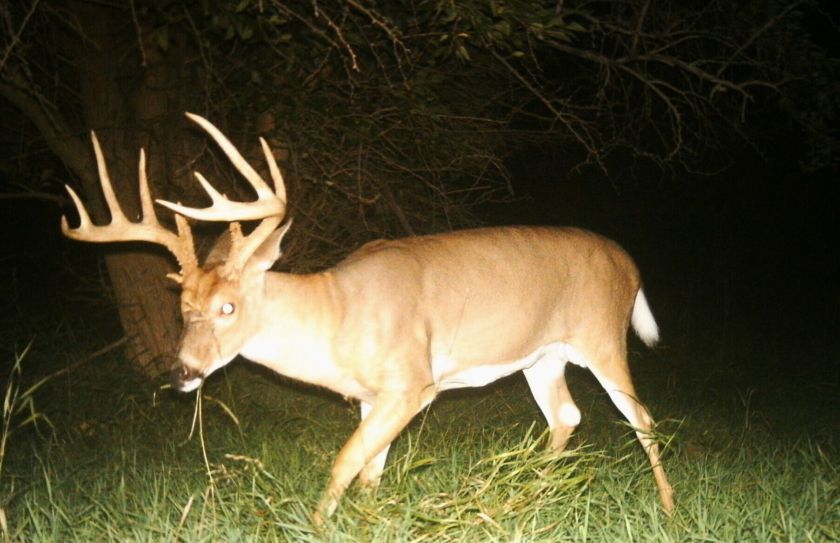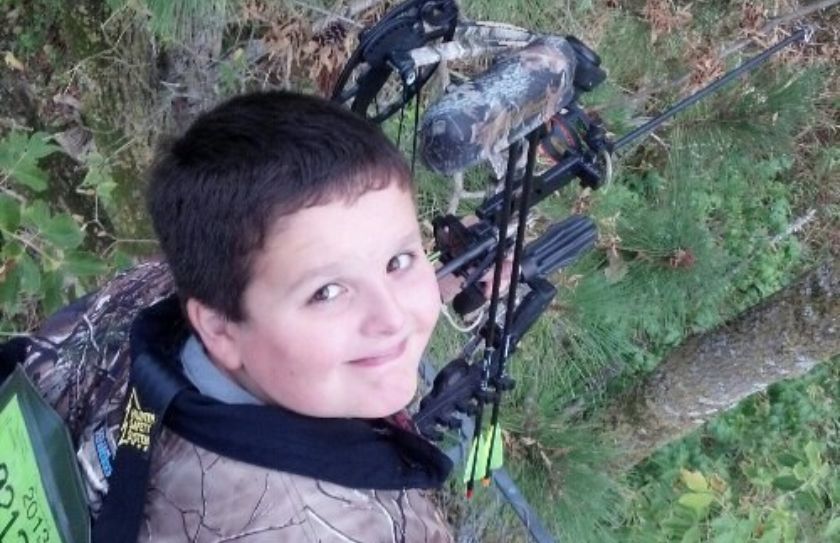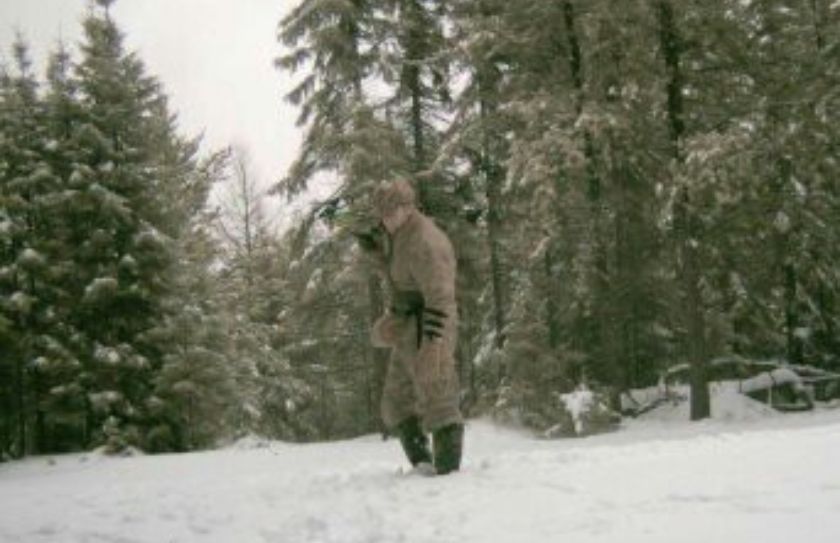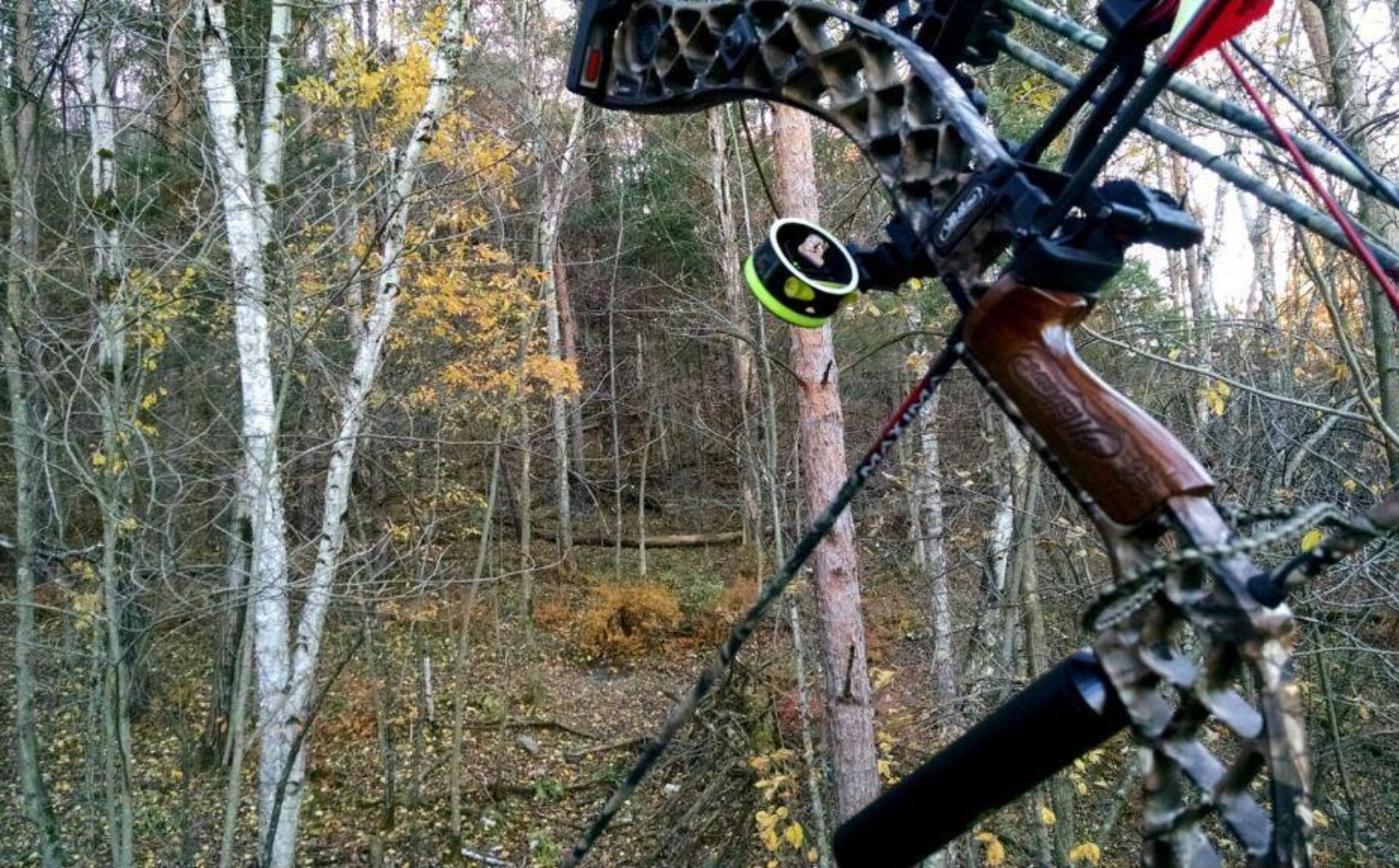
How often do you plan on an all day sit for whitetails? From incredible hunts that ended during the last 1/2 hour of daylight, to "dark to dark" sits that have ended with zero deer sightings, I have experienced the entire spectrum from failure to success during an all day sit for whitetails. As the age of the bucks I pursue continues to increase along with my own, I have become much more strategic in my all day whitetail pursuits. 2006 was the last year that I sat for 10 or more complete days in the woods, what about you?
Late October is the first period of the hunting season that I even consider an all day sit, and even then the level of strategy I employ is targeted to be much more advanced than simply parking my rear-end in a great stand, all day. My goal is to get the most out of both the morning hours, and the evening hours to help maximize my potential opportunity for success. Here are conditions that help me to determine when and where I may choose to take an all day sit for whitetails:
The Whitetail Rut
Basically, if the mature bucks aren't rutting...I do not spend an entire day in the whitetail woods. There is a wealth of historical data to support the preferred movement patterns of mature bucks, but a 2013 article from the QDMA stressed again, the consistency of the preferred "Dusk and Dawn" travel patterns for bucks. Can you find a giant cruising during the day? Sure, there is a time and a place to potentially kill a mid-day monster, but those opportunities are few, far between, and during a very select period of time.
When To Sit All Day?
The Peak-rut is when I start to consider an all day sit for whitetails. Mature bucks become extremely active during the morning hours when the temperatures are cold and the conditions are calm, but the activity levels take a sharp dive by lunch time, and seem quite lazy until about an hour prior to dark. During any time of the hunting season a monster can be taken during the middle of the day, but I personally believe that in many high hunting pressure areas those experiences can be deceiving! It would be impossible to know for sure, but I have always wondered how many bucks that were shot during the middle of the day, were actually bumped from their daytime bedding areas by other hunters? In the small woodlot, Southern MI agricultural lands that I used to frequent in the 80s and 90s, it wasn't uncommon to have at least 1 hunter for every 10 acres of woods. When the majority of woodlots weren't larger than 20 acres, that equalled a lot of acres pressured extremely often. Daytime movements of any deer were common, as they were pushed from small woodlot to small woodlot like a giant game of pinball. Of course that is an extreme movement, but the research supports very little midday mature buck movements until 1 specific time of the year: The period of time that includes from the Peak to Post rut.
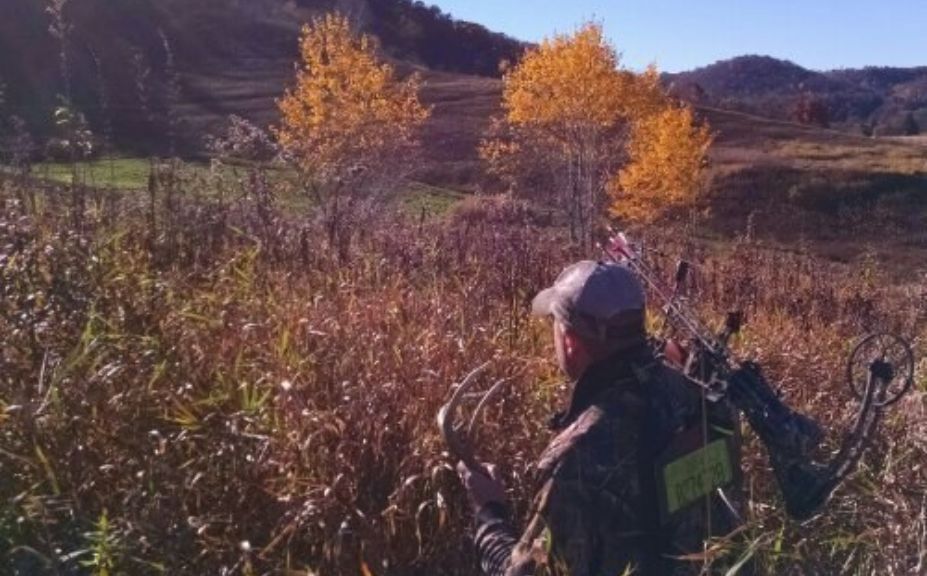
*Mornings during the rut can be an incredible time to take a monster! Check out theseMorning Rut Hunting Strategies.
It doesn't take a lot of imagination to picture an old monarch find his first and even 2nd doe of the breeding season, fairly easily! Sure, bucks of all ages participate in the process of breeding, but which bucks are able to stake claim to the first receptive does? I personally do not believe those bucks are the smallest, and youngest. Once a large percentage of does are able to breed a mature buck really doesn't have to move far to find a doe, or most likely another doe for that matter. So why would he have to move during the middle of the day during the pre rut and beginning of the peak rut, when a large supply of receptive does are readily available? I don't believe that he has to, and that's why I wait until the middle of the rut and later for an all day sit, when an experienced bruiser is ready and willing to put the miles on during his annual search for one or two more does before the close of the primary rut.
How About Taking a Stand (or Two!)
I find it's often best to use two and even three stands during an all day sit for a rutting monster, if I want to maximize my level of potential success during each hour of the day. I am a numbers kind of guy, what about you? It helps me to look at potential stand locations within a scale of 1-10, with 1 being the worst and 10 being the best. My passion is to hunt for mature bucks by sitting in the highest value stand for the morning, midday and afternoon hours. Rarely does 1 stand cover every hour of the day while maintaining a very high level of potential. A stand that's a "10" in the morning often turns into a "3" during the afternoon, and the exact opposite can be said for many of the best evening stand locations. There is a reason for this that will be discussed in a moment, but the concept of getting the most out of each hour of the day shouldn't be ignored as it relates to the potential consistency of your success. I can think of 1 extreme example of the difference between evening and morning stand locations, but I feel that I need to tell you about a stand locations even though it falls outside of the norm.
The horse pasture stand was used for roughly 10 years, and was responsible for nearly a dozen mature buck opportunities. How many were in the morning? All but 2. TWO! and it wasn't for a lack of effort, in particular during the early stubborn years of our hunting efforts in that location. On the other hand, we have stand locations that although not to such an extreme degree, have only offered evening mature buck opportunities. In the case of the horse pasture stand we found that if we hunted all day (it seemed so attractive at first!) that we simply were blowing an evening opportunity by not sitting in a stand that was more appropriately matched to the particular time of the day. It wasn't that we didn't have a chance of shooting a buck during the evening in that particular stand, it was just that the odds dictated that we were wasting higher value opportunities.
*It can sometimes be confusing deciding which stand to sit in during a particular time of the day or season. To help make some sense of it all, take a look at thisTree Stand Rotation Guide.
Where To Sit?
If you take nothing more away from this article, please take this: During the rut, morning stand locations should relate to bedding areas, and evening stand locations should relate to food source movements. That's it, that is the most critical point of this article! Maybe I should have just started with that and saved you some time? Regardless though, that is why it is very rare that 1 stand can cover an entire day of mature buck movements during the rut. That reason is directly responsible for why our horse pasture stand was so poor during the evening hours. Located on a bench between two bedding areas with a steep, rocky face directly in front of the stand, the location was a prime early morning cruising funnel! However, as the evening hours approached nearly every deer in the woods was heading to major food sources located up, and several hundred yards away from our position. During 1 hunt during the 2nd day of WI's gun season I passed over 20 different bucks and over 50 total deer, by noon. This hunt represented the most bucks I saw in 1 sit, ever, let alone in WI on that particular piece of land. So, I though I would spread the wealth to my hunting buddy Max and asked him if he wanted to sit in the same stand for the evening. Do you know how many deer he saw? NONE! And to make matters worse, I shot a great mature buck sitting in the stand I moved to...the stand that Max would have sat in if I hadn't been so "generous". However...we had 1 more morning, and as you can probably guess, Max went into that morning stand and within an hour of first lite shot the oldest and biggest buck of his life, a 156" 200# 10 point we had watched for 2 years.
My goal for you (and myself) is to make the most out of each sit, and following the deer to morning bedding areas and evening food sources is an outstanding tactic that I hope that you can use to your advantage. During the daytime hours it is possible to find a great cruising stand that places you between both food and bedding cover, but with opposite deer patterns from evening to morning times of the day, the wind can sometimes be great for one period of time, and not another. There are so many pieces that combine to form the complexity of stand choices, but as you reflect on your best stand locations, as yourself...do you see a consistency in exactly when you had the most opportunities? If you can take that same approach and make sure that you sit in a great stand that matches each portion of the day, your level of success should be consistently high...if it isn't already!
Conclusion
Are you sitting in the best stand for the morning hours? What about the evening hours? Is your #1 stand choice for both periods of time, really the same stand? I find that if and when I take an all day sit for whitetails, my success has substantially increased when I do my best to match my stand choice with not only the time of year that I am hunting, but in particular the time of day that I am hunting as well. Do you have your own, "horse pasture morning stand"? I hope so, and I hope that you not only have an incredible evening stand to use as well, but that you can combine them to form the perfect all day sit during the rut!
